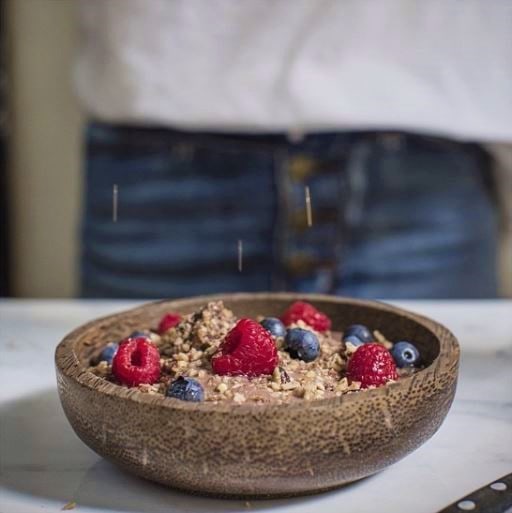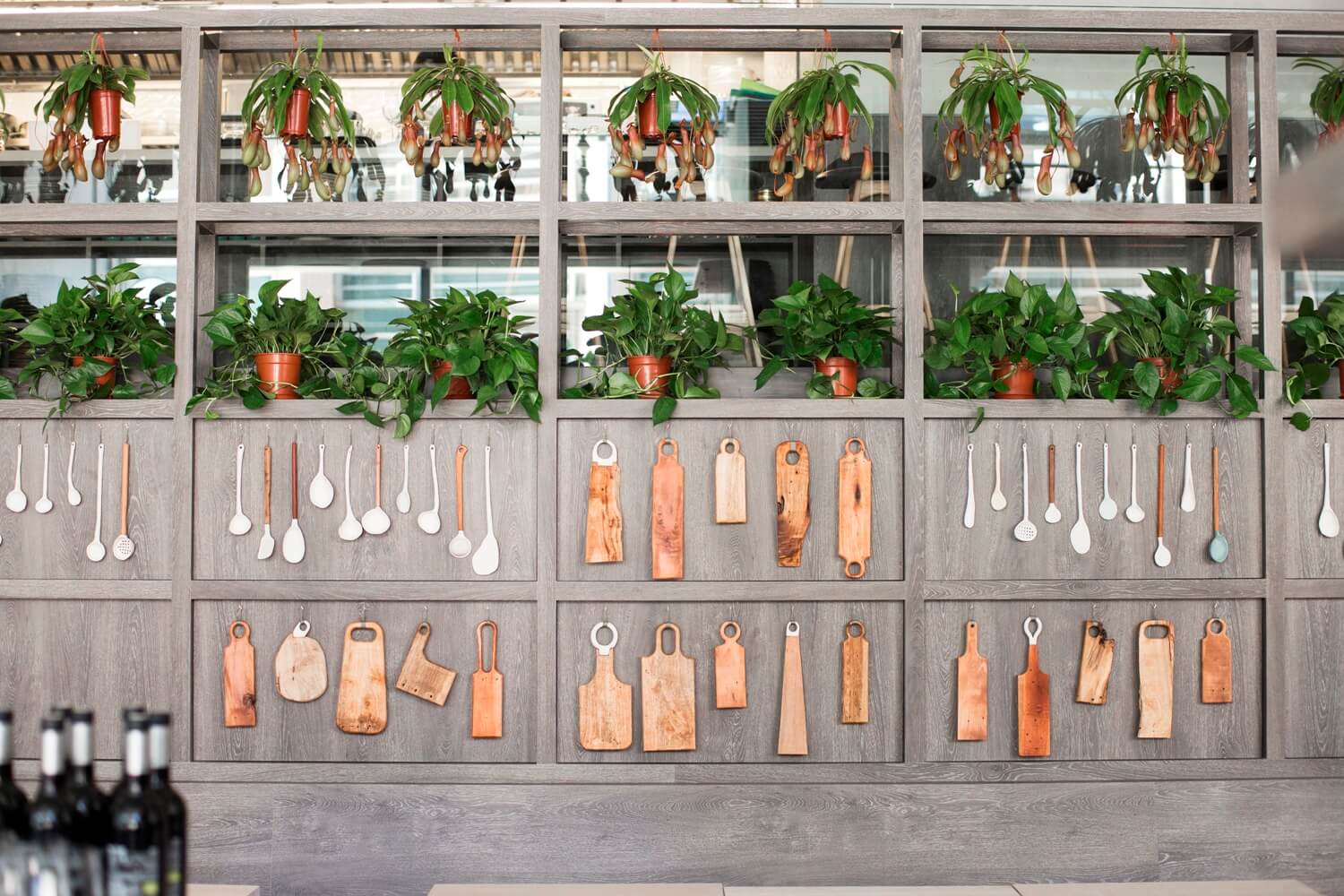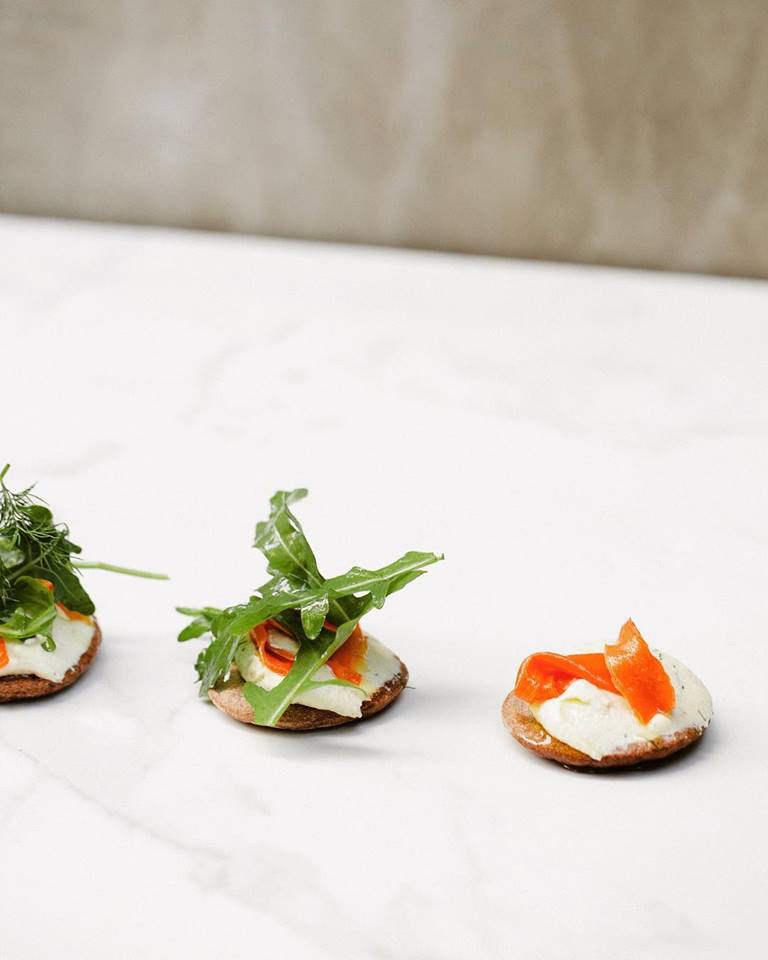Wouldn’t it be ideal to eat less, but gain more in nutrition, satisfaction and energy? And how great would it be to produce less waste and spend less money, but still find happiness and contentment in life? ‘Less is more’ gets thrown around a lot these days, but unfortunately, most of us don’t practice it—or don’t know how to. One person who has the art down to a tee is Peggy Chan, who not only lives her life with a less-is-more attitude but promotes her ethos through her business, plant-based eatery Grassroots Pantry. We chat with Peggy about why less is more, and how consumers and businesses can implement the practice in their own lives.

At what moment in your life did you realise less is more? When I first began to practice Theravāda Buddhism I began to think about what it really means to have a fulfilling and abundant life. It made me question the meaning of life and what constitutes ‘happiness’? I discovered that you can attain happiness and truth through compassion and gratitude, whereby material goods and money begin to matter less. I think what is most fulfilling with the study of Buddhism is that you can control your fate and your destiny by the attitude you bring to life. We have the power to control our thoughts, emotions and ultimately our minds. I think that really gave me the motivation and understanding to maximise the use of my time on this planet for driving positive change.
See also: 21 Vegan Restaurants In Hong Kong For Plant-Based Dining
How does that concept of less is more translate to what you do at Grassroots Pantry? Often people look at a dish for the portion size and the meat element, which is what society sees as expensive and valuable—but what we do at Grassroots is we emphasise nutritional values and the overall ecosystem. A big plate of food does not equate to nutrient-density, and often we’re eating too much food filled with empty calories. We strive to create dishes that are whole, nourishing and well-balanced. The reason we have cravings is mostly due to a lack of certain nutrients in our bodies, so if we nourish our bodies effectively with what it actually needs, we can eliminate unnecessary grazing and snacking altogether.

How can people minimise food waste and consume in a more conscious manner? Ask yourself the question: Do you really need it? Just because something is on sale, is it necessary? Refrain from buying into marketing schemes. Consume as carefully as possible: purchase from farmer’s markets, and reduce packaging by bringing your own reusable bags and bottles. We all need to make an effort to reduce, reuse, and recycle in a way that is transparent: Hong Kong lacks transparency in this respect, which deters people from even wanting to recycle in the first place—hence the reason I believe personal accountability and personal action trumps any other efforts when it comes to environmental sustainability. We have no time to blame others but ourselves. Let’s begin with ourselves, today.
See also: 13 Eco-Entrepreneurs In Hong Kong Shaking Up Sustainability
In terms of food waste in kitchens, what could other businesses in Hong Kong be doing to reduce food waste? Most of the industry’s food waste is derived from spoiled or unfinished food on customers’ plates. As chefs, the first thing we should rethink is portioning and nutrient-density.
As customers, remind yourselves that a fuller plate does not necessarily equate to more value. Recognise restaurants that do prioritise quality ingredients and nutritional balance and encourage businesses to rethink food from the perspective of nutrient-density rather than size—this could be an impactful step moving forward. Rethinking portioning would also directly affect our inventory. In minimising our inventory and keeping a tight, high turnover of stock, rather than to allow food and beverage stock to sit on shelves waiting to be sold, we are able to maintain a healthier cash flow.
Additionally, more and more buildings are installing food waste digesters or compost machines, but it’s not fully accessible yet for smaller businesses, so the only way to divert that waste is to organise logistics in groups or as independents through private organisations such as Baguio Waste Management. The second option is to be creative in how you get rid of ‘waste’: our beetroot truffles are actually made using the pulp after we cold press juice, and our almond tarts are made with the pulp leftover from our almond milk. Consider ways to reinvent scraps and pulps and use as much of a product as possible.

Can you tell us a bit more about the new bowls lunch and how you combine the foods to make it as nutrient-dense as you do? The idea came about when I figured we can better accommodate our customers during lunchtime by giving people more options through a ‘noodle cart style’ ordering scheme. It is essentially presented as a ‘salad bar’ picked to order with a healthy array of protein, vegetables, nutrient-dense carbs, fermented or pickled foods, and plenty of other vitamins and minerals through the choice of nuts, seeds and superfoods. What’s healthy for you isn’t necessarily healthy for me, and what’s nourishing for me today might not effectively do the same tomorrow. We wanted to keep it flexible and provide options fit for different lifestyles and body types.
The first part of the bowl is the base, the carbohydrate: we decided on fibre-rich options than simply pasta or noodles, and chose instead brown rice, quinoa, or teff porridge. For those wanting to go grain free for the day, we offer the options of zucchini spiral ‘pasta’ and mixed seasonal greens, which are both low in calories.
The protein element is constantly rotating, with options that are nut-based or beans, or options which mimics ‘meatier’ textures and flavours.
The probiotics is a choice of three which rotates weekly from an assortment home fermented or pickled vegetables to keep our immune system strong. And then we add a little boost of minerals like calcium, potassium, magnesium, omega fatty acids through the use of sprouted nuts, seeds, and superfoods such as flax seed and chia seeds for brain functions. They’re never just sprinkled on from a retail bag, and is an element of the meal that adds flavour and texture.
Finally, the sauce which is often tahini, sprouted nut or avocado base, pulls everything together.
We believe in the paradox of choice: what’s the science behind the perfect menu? From a chef’s point of view, you need to think about a balance of textures and flavours, while utilising different cooking methods. If I have sauerkraut on this dish, I’m not going to use it somewhere else, which helps a small menu seem generous in its variety offered. At Grassroots Pantry, the menu isn’t fusion, we a mixture of dishes inspired by different cultures showing that vegetarian meals are very flexible and you can eat abundantly, sans meat, anywhere around the world. We create our dishes first and foremost with what is in season. For example, we are currently serving a dish of Beetroot Agnolotti filled with Charred Savoy Cabbage, Macadamia Cheese, topped with Pickled Beetroot Brunoise, Sauteed Rainbow Swiss Chard, and Roasted Jerusalem Artichoke. When it comes to seasonality, you can’t possibly recreate this same dish in June using locally available products, but also, our bodies wouldn’t gravitate towards something as warming and filling like that in the summer.

Could you tell us about the mental and physical benefits of living a plant-based vegan lifestyle? Physically, I feel stronger and more energetic for longer periods of time. I don’t get sick anymore and can heal most nuisances and symptoms myself through turmeric, ginger and lemon juice. Drinking alkaline water regularly, and getting enough rest is the number one form of medication. This probably saves me on medical bills that otherwise would have been purchased for pharmaceuticals, IV and pills. Plant-based organic lifestyles are often criticized for it being expensive—but compared to what? How one decides to spend their money is a personal choice, but more importantly, where we decide to spend our money as customers effectively has an impact on how our industry reacts to consumer demands. I’m certain that with more dollars spent on good clean food which supports local agriculture, we are helping reduce the negative impact on our environment and ultimately reducing external costs.
Mentally, a whole foods diet makes me feel good inside. When the quality of what you put in your body aligns with the quality of your thoughts, this allows a holistic lifestyle to flourish and so you can live a more productive and positive life.
Christmas is just around the corner and the buying frenzy that comes with it is approaching fast. Why should people give the gifts of experiences rather than objects this year? I’m never someone who buys things for people but I would be more than happy to treat you to a really nice dinner or take you on a trip. An experience lasts forever, sometimes inspires or changes you. It opens your eyes to so many different things. Material products are just what they are: they might have a one-time use, it might be something that lasts for a lifetime, but you don’t leave the world with it anyway—which is why experiences are so much more worthwhile.
See also: A Guide To Conscious Gifting For A More Sustainable Christmas
How can people consume more consciously? Know the origins or learn to research the origins of what you buy. What works in one place might not work in another, and I think that’s why we always have to look at things from a more holistic point of view. Does it benefit just one single entity or the entire ecosystem? So something like organic chips, that’s fried in palm oil— just because it has an organic label on it, is palm oil actually the best oil to be frying chips in? It’s a lifetime of learning. Do the research yourself and understand it from your point of view. If you don’t think that palm oil is bad, that’s up to you. There are so many changes and news stories that what I told you yesterday might not be true tomorrow.



